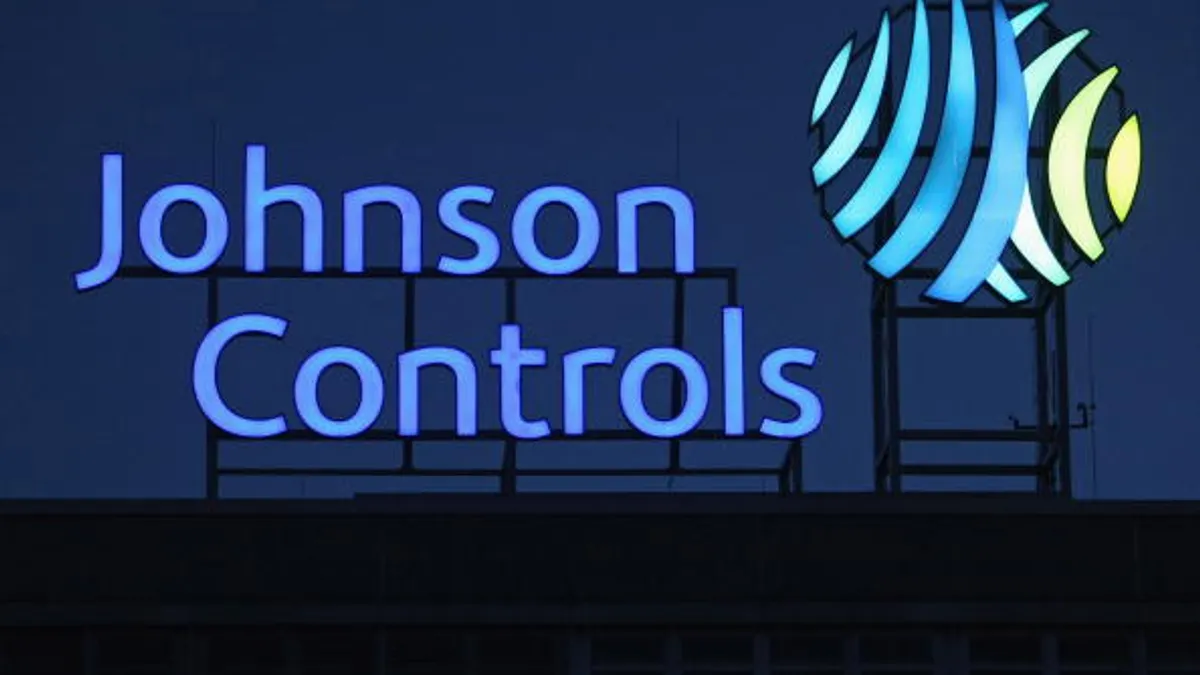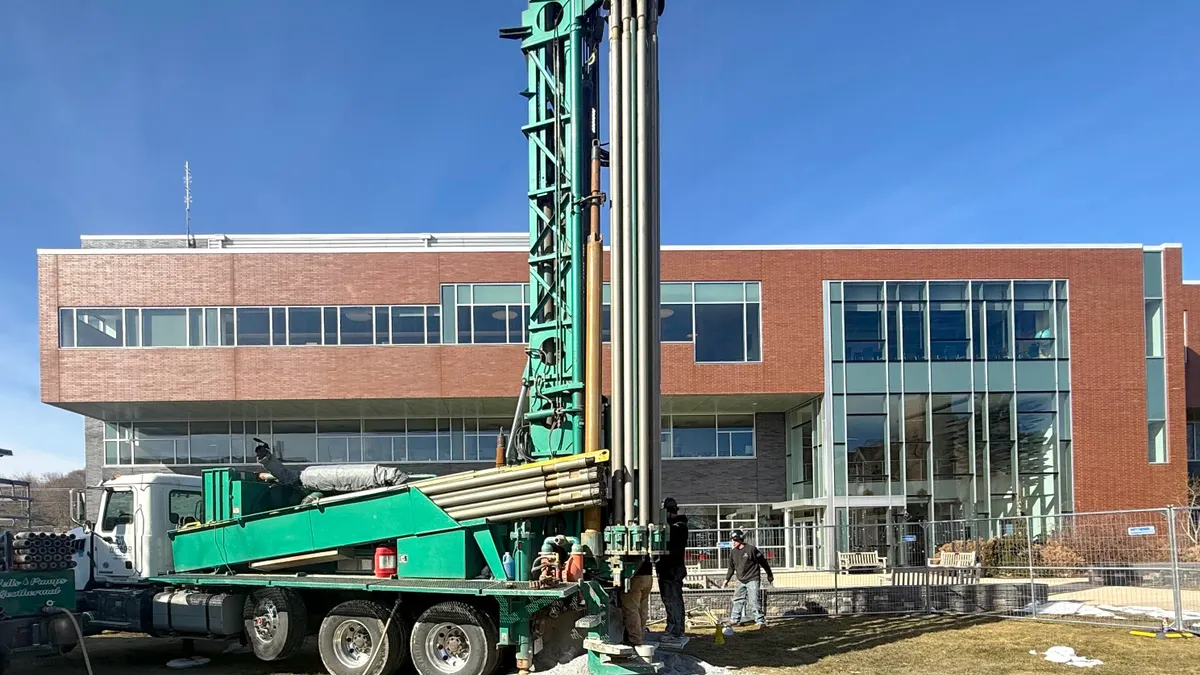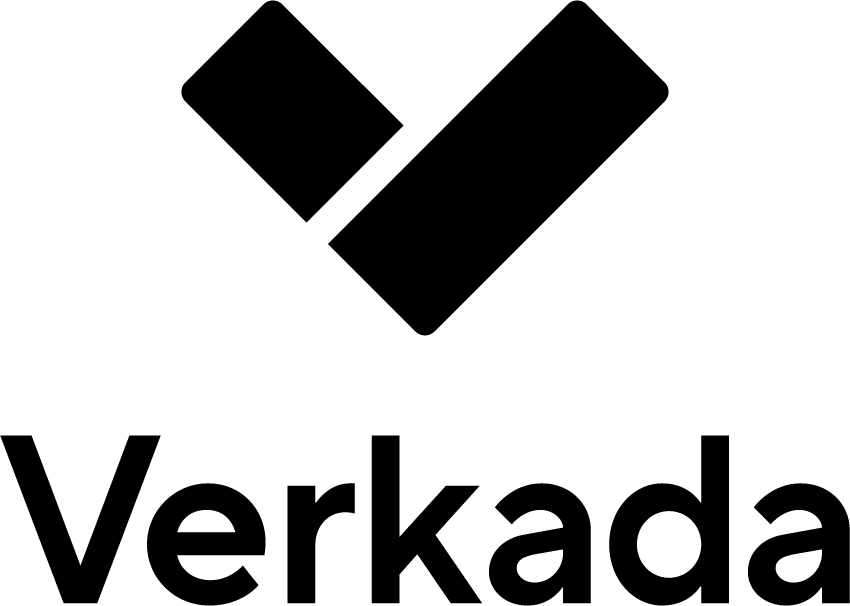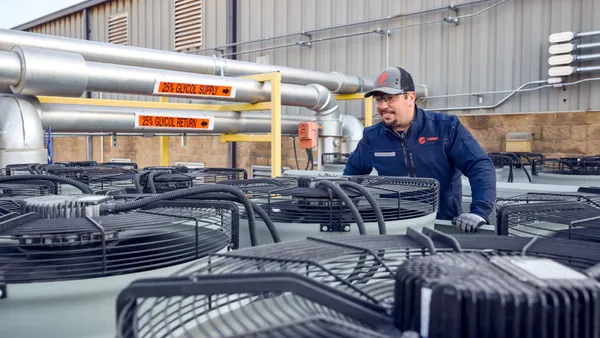Dive Brief:
- Johnson Controls recorded 7% organic year over year sales growth and grew the order backlog for its core Building Solutions division to a record $14 billion in Q2 2025, the company said in its second-quarter earnings call May 7.
- Within Building Solutions, respective backlogs for its service and systems categories rose 12% and 9% year over year, the company said.
- More broadly, Johnson Controls is responding to this year’s U.S. import tariffs by passing along some price increases “one for one” to customers and reorienting its supply chains, the company said.
Dive Insight:
The company saw strong performance across geographies and industry verticals, particularly data centers, CEO Joakim Weidemanis said on the call, his first since taking the job in March.
“In terms of leading indicators, we don’t see any slowdown in some of the areas where you might think there would be slowdowns,” he said, referring to industry chatter that data center growth could be going off the boil.
Long-term customer relationships and the “differentiated advantage” of its York high-performance chillers are supporting the company’s data center cooling business amid competition from newer entrants into the rapidly growing liquid-cooling market, Chief Financial Officer Marc Vandiepenbeeck said on the call.
Johnson Controls’ global exposure is a benefit for its data center business as construction activity ramps up in the Asia-Pacific region, Weidemanis said. The order backlog for its Building Solutions Asia Pacific subdivision jumped 21% year over year to $1.5 billion, largely driven by a 23% surge in systems orders.
Johnson Controls’ York chillers have a wide operating range that allows data center customers to expand and standardize cooling infrastructure, giving company leadership confidence it can hold its own against newer market entrants, Vandiepenbeeck said.
Unlike competitors that incorporate “off the shelf” parts into data center cooling systems, Weidemanis said, Johnson Controls designs purpose-built modules that “can eke out more performance.”
Manufacturing equipment as complicated as a high-performance chiller “is not something you do in 10 or 20 years,” he said. “[They are] built on unique know-how we’ve developed over decades.”
On the trade policy front, Johnson Controls’ tariff exposure represents about 2% of sales or 3% of cost of goods sold, according to the quarterly earnings presentation. The company is protecting its bottom line through a mix of pricing pass-throughs, regionalized manufacturing, supply chain resiliency measures and contractual adjustments for change orders, it said in the presentation.
Johnson Controls improved its approach to change orders with “strong contractual terms that allow repricing” following the inflation spike earlier this decade, setting it up to weather the current uncertainty better while keeping customers happy, Vandiepenbeeck said.
“We think about [tariffs] not so much as a headwind but as a dampener on our ability to drive further margin expansion,” he said. “For a lot of our businesses, we enter into multi-decade relationships … and we want to be remembered as the team that navigated through the tariff situation in a manner the customer will perceive as fair and balanced.”












